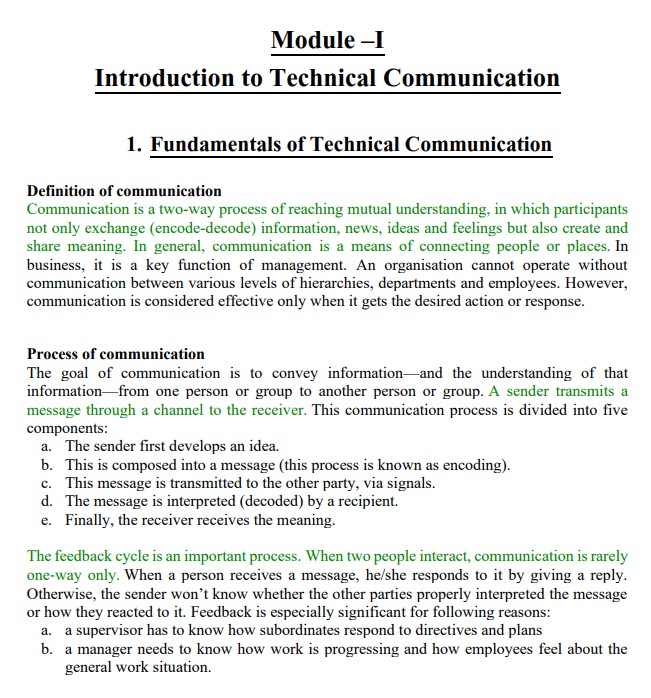Fundamentals of Technical Communication in English
Summary:
“Fundamentals of Technical Communication in English” is a concise and comprehensive PDF that explores the core principles and best practices of effective technical communication in the English language. This valuable resource serves as a guide for individuals seeking to enhance their communication skills in the technical domain.
The PDF highlights the importance of clarity, precision, and organization in conveying technical information effectively. The PDF covers the following:
- Techniques for communicating complex technical concepts clearly and concisely.
- Emphasizes clarity, precision, and organization in conveying technical information. Provides insights into structuring documents, employing appropriate terminology.
- Offers tips for bridging the communication gap between technical experts and laypersons.
- Suitable for students, professionals, and anyone seeking to improve technical communication skills.
- provides the best info on technical writing, speaking, and presentation skills in English.
Additionally, the module delves into different styles of technical communication, including the advantages and disadvantages of written communication and being sensitive to space constraints.
Excerpt:
Fundamentals of Technical Communication in English
Module –I
Introduction to Technical Communication
1. Fundamentals of Technical Communication
Definition of Communication
Communication is a two-way process of reaching mutual understanding, in which participants not only exchange (encode-decode) information, news, ideas and feelings but also create and share meaning. In general, communication is a means of connecting people or places. In business, it is a key function of management. An organisation cannot operate without communication between various levels of hierarchies, departments and employees. However, communication is considered effective only when it gets the desired action or response.
Process of Communication
The goal of communication is to convey information—and the understanding of that information—from one person or group to another person or group. A sender transmits a message through a channel to the receiver.
This communication process is divided into five components:
a. The sender first develops an idea.
b. This is composed into a message (this process is known as encoding).
c. This message is transmitted to the other party, via signals.
d. The message is interpreted (decoded) by a recipient.
e. Finally, the receiver receives the meaning


Reviews